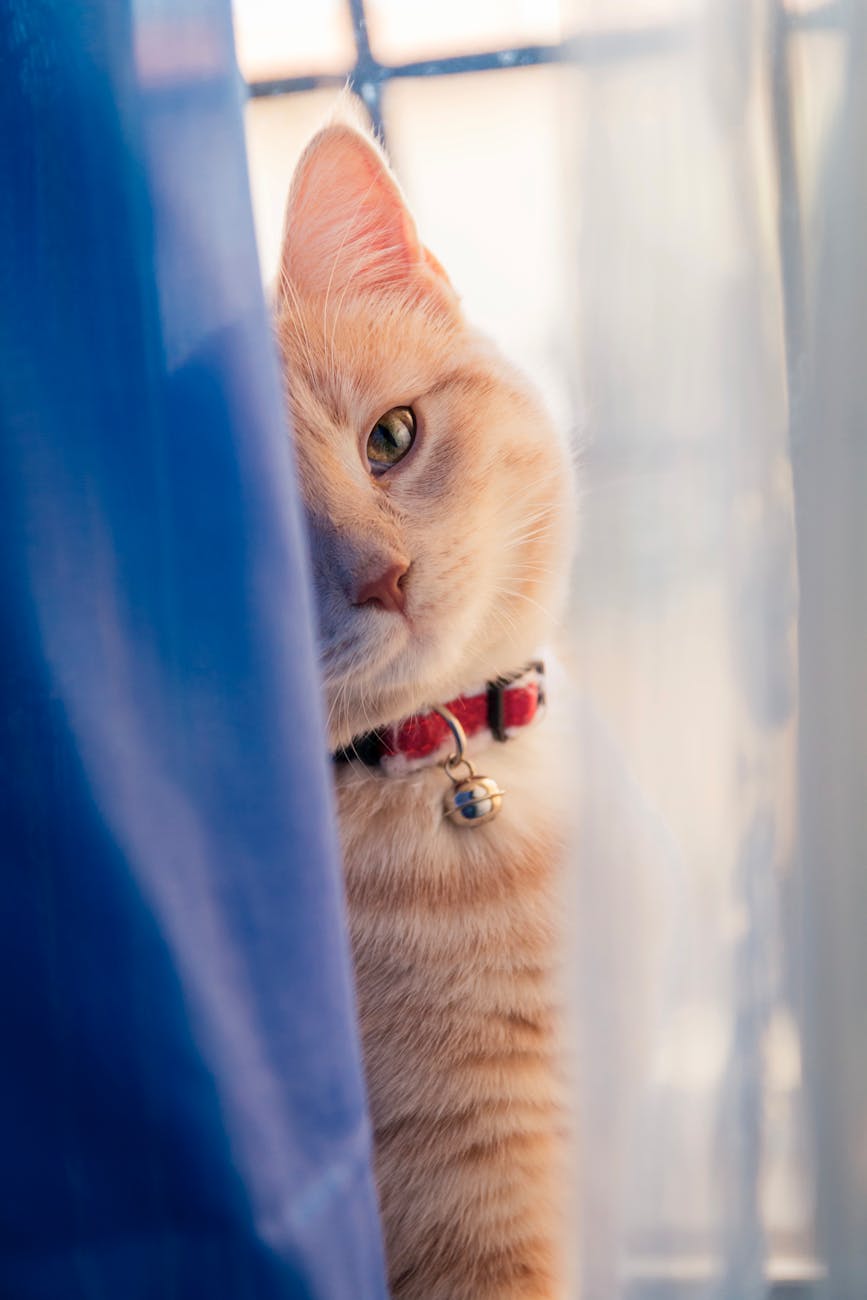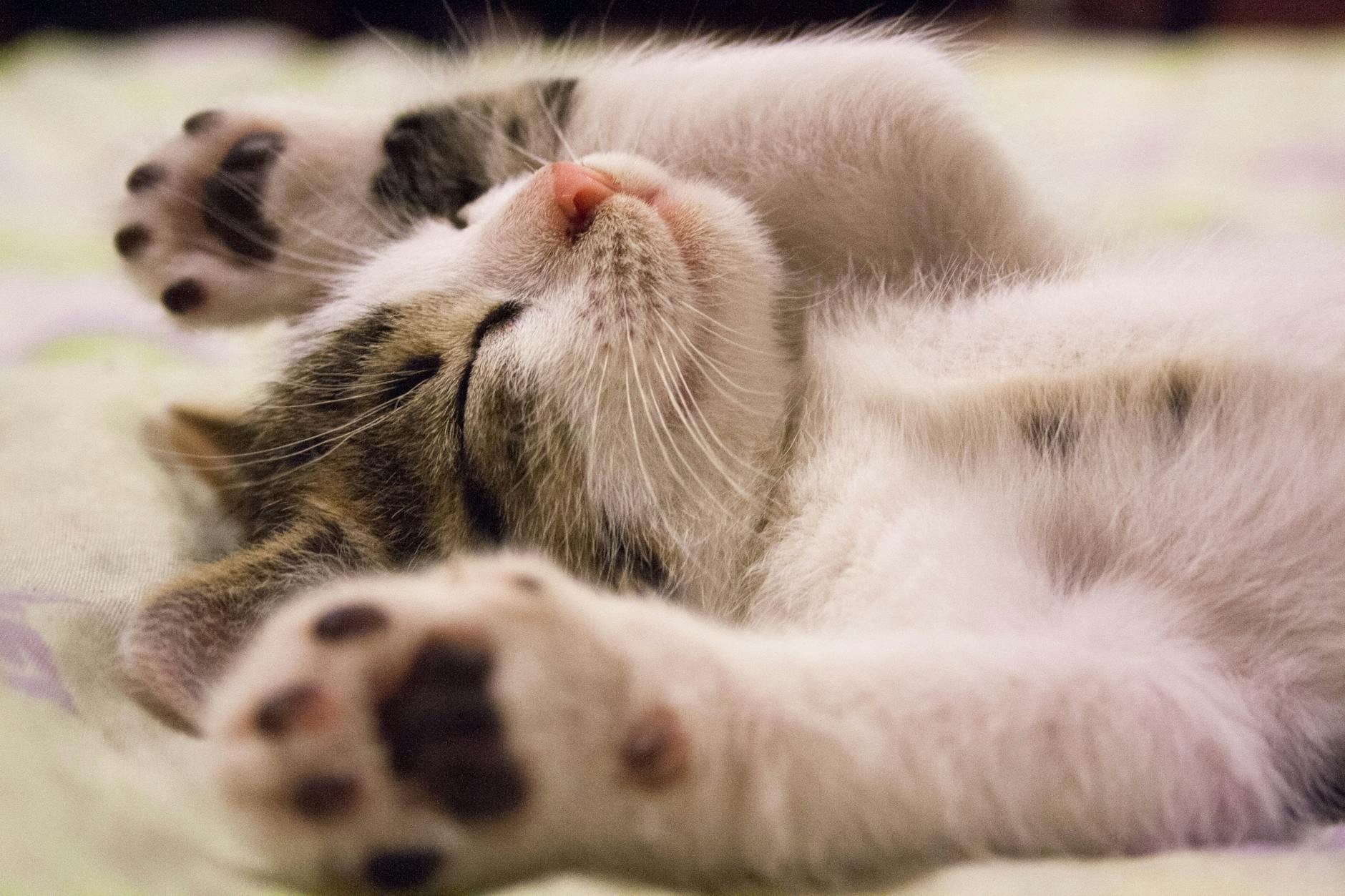Discovering that your cat is peeing blood can be alarming and distressing for any pet owner. This symptom, known as hematuria, often indicates underlying health issues that require immediate attention. While it may signal a urinary tract infection or more serious conditions, understanding the broader context helps in determining the right course of action. In this comprehensive guide, we will explore the various causes of cat peeing blood, alongside potential health risks and when to seek veterinary care. By being informed, you can ensure your feline friend receives the best possible care and support.
Understanding the Symptoms of Blood in Cat Urine
When you notice cat peeing blood, it’s crucial to recognize the symptoms associated with this alarming condition. Hematuria, or blood in urine, can manifest in varying degrees. Here are some signs to watch for:
- Color Changes: Urine may appear reddish or dark brown.
- Straining to Urinate: Your cat may show signs of discomfort while trying to urinate.
- Frequent Urination: Increased trips to the litter box, often with minimal output.
- Lethargy: A noticeable decrease in energy and activity levels.
- Painful Vocalization: Your cat may meow or cry out when urinating.
These symptoms not only indicate cat peeing blood but may signal more severe issues like infections or bladder stones. It’s essential to observe any behavioral changes.
Comparison of Symptoms
| Symptom | Mild Condition | Severe Condition |
|---|---|---|
| Color Change | Slight discoloration | Dark red or brown |
| Straining | Occasional straining | Frequent and painful |
| Energy Level | Slight lethargy | Extreme lethargy |
| Vocalization | Minor discomfort | High-pitched cries |
If you identify these symptoms, act promptly, as early intervention can significantly improve your cat’s health.

Common Causes of Hematuria in Cats
When you notice your cat peeing blood, it can be alarming. Several underlying conditions can lead to hematuria (the presence of blood in urine). Understanding these causes is essential for addressing the issue promptly.
Key Causes:
- Urinary Tract Infections (UTIs): Bacterial infections can irritate the bladder lining, resulting in blood.
- Bladder Stones or Crystals: These can cause damage to the urinary tract, causing bleeding.
- Trauma: Physical injuries, such as being hit by a vehicle or rough play, may lead to internal bleeding.
- Tumors: Cancerous or non-cancerous growths can develop in the urinary tract, leading to blood in the urine.
- Coagulation Disorders: Conditions affecting blood clotting can cause unexplained bleeding.
Comparison of Causes:
| Cause | Severity | Treatment Needed |
|---|---|---|
| Urinary Tract Infections | Moderate | Yes |
| Bladder Stones | Moderate to High | Yes |
| Trauma | High | Immediate Vet Care |
| Tumors | High | Depends on Type |
| Coagulation Disorders | High | Yes |
Recognizing the specific cause of your cat peeing blood is crucial for effective treatment and recovery. Therefore, consult your veterinarian for an accurate diagnosis and tailored solutions.
Potential Health Risks Associated with Peeing Blood
Noticing your cat peeing blood can be alarming for any pet owner. This symptom, known as hematuria, may point to various underlying health issues. Here are some potential health risks associated with this condition:
- Urinary Tract Infections (UTIs): Chronic infections can introduce bacteria, causing inflammation and bleeding.
- Bladder Stones: These can irritate the bladder lining, leading to pain and blood in urine.
- Kidney Disease: Conditions like renal failure increase the risk of hematuria due to compromised kidney function.
- Neoplasia: Tumors in the urinary tract or bladder can manifest as blood in the urine.
- Trauma: Physical injury to the urinary tract can cause bleeding and requires immediate attention.
In summary, if your cat is peeing blood, it’s crucial to recognize the potential risks. Prompt veterinary care can help diagnose the issue and prevent complications. Don’t wait—addressing blood in your cat’s urine early ensures better health outcomes. Ultimately, safeguarding your pet’s health rests on your proactive response to this alarming symptom.
When to Seek Veterinary Care for Your Cat
If you notice your cat peeing blood, it’s crucial to act promptly. Blood in cat urine, also known as hematuria, can indicate serious health issues. Here are some key signs that require immediate veterinary attention:
- Consistent bleeding: If your cat frequently pees blood, don’t wait for symptoms to resolve.
- Severe pain: Watch for signs of discomfort, such as vocalization or hiding.
- Frequent urination: Excessive trips to the litter box, especially if accompanied by straining, can signal a problem.
- Lethargy: A sudden drop in energy levels or behavioral changes, such as decreased appetite, warrants a visit.
- Signs of infection: Symptoms like fever or vomiting paired with blood in the urine require immediate care.
Additionally, older cats or those with pre-existing health issues should be seen sooner. Delaying veterinary care can worsen your cat’s condition. Remember, quick intervention can significantly improve outcomes for your beloved pet experiencing cat peeing blood.

Diagnostic Tests for Blood in Cat Urine
When you discover your cat peeing blood, prompt action is essential. To determine the underlying cause, veterinarians perform several diagnostic tests, which can include:
- Urinalysis: This initial test examines the urine for red blood cells, bacteria, crystals, and other abnormalities.
- Urine Culture: This helps identify any bacterial infections by culturing the urine sample to prompt effective treatment.
- Blood Tests: A complete blood count (CBC) and biochemical profile assess overall health and pinpoint issues affecting urinary health.
- Imaging: X-rays or ultrasound can reveal potential obstructions, tumors, or kidney abnormalities.
| Test | Purpose |
|---|---|
| Urinalysis | Detects blood, crystals, and infection |
| Urine Culture | Identifies bacterial infections |
| Blood Tests | Assesses overall health |
| Imaging | Visualizes obstructions or anomalies |
By conducting these tests, veterinarians can accurately diagnose the cause of your cat peeing blood, enabling them to create an effective treatment plan. Early diagnosis is crucial, so seek veterinary care as soon as possible if you notice symptoms.
Treatment Options for Urinary Tract Issues
When you notice your cat peeing blood, swift action is essential. Treatment options vary based on the underlying cause, but they often include:
Medications:
- Antibiotics: Effective for bacterial infections.
- Anti-inflammatories: Help reduce swelling and discomfort.
Surgery:
- Required for severe urinary blockages or structural abnormalities.
Dietary Changes:
- Special therapeutic diets can alleviate urinary issues, reduce crystals, or prevent recurrence.
Increased Water Intake:
- Encourage your cat to drink more. You can use:
- Water fountains: Cats usually prefer flowing water.
- Wet food: A moisture-rich diet increases hydration.
- Encourage your cat to drink more. You can use:
Comparison of Treatment Options:
| Treatment | Purpose | Suitability |
|---|---|---|
| Medications | Treat infections & inflammation | Most cats with UTI |
| Surgery | Resolve physical obstructions | When non-surgical methods fail |
| Dietary Changes | Prevent crystal formation | Cats with recurring issues |
| Increased Water Intake | Support overall urinary health | All cats, especially prone ones |
Always consult your veterinarian to determine the best approach tailored to your cat peeing blood situation.
Preventative Measures to Protect Your Cat’s Urinary Health
To ensure your cat remains healthy and free from urinary tract issues, it’s crucial to adopt preventative measures. Here’s how you can protect your furry friend from cat peeing blood:
Hydration: Encourage water intake by providing fresh, clean water at all times. Consider using a water fountain, as many cats prefer running water.
Balanced Diet: Feed your cat a high-quality diet tailored to their specific age and health needs. Look for foods that include proper nutrition without excess fillers.
Regular Vet Check-ups: Schedule annual veterinary visits. Routine check-ups help catch any signs of urinary issues early, preventing conditions that could lead to cat peeing blood.
Litter Box Maintenance: Keep the litter box clean and accessible. Cats may avoid using a dirty litter box, which can lead to urinary problems.
Stress Reduction: Minimize stress in your cat’s environment. Provide safe spaces, engaging toys, and regular playtime to ensure they feel secure.
By implementing these simple yet effective measures, you can significantly reduce the risk of your cat experiencing urinary tract issues leading to cat peeing blood. Remember, a proactive approach is always the best defense!

Home Care and Support for Your Ailing Cat
Caring for a cat peeing blood requires attentive support and a nurturing environment. Here are steps to help you manage your cat’s condition at home:
Provide a Comfortable Space: Create a quiet and cozy area where your cat can relax, especially if they feel unwell. A soft bed or blanket can make a difference.
Offer Fresh Water: Ensure your cat has constant access to clean, fresh water. Hydration is crucial for aiding recovery and diluting urine.
Monitor Food Intake: Feed a balanced diet high in moisture. Wet food can help keep your cat hydrated and support urinary health.
Maintain Litter Box Cleanliness: Scoop the litter box daily to monitor changes in urine color and consistency. A clean environment reduces stress and promotes good hygiene.
Track Behavior Changes: Keep an eye on your cat’s behavior; note any changes in eating, drinking, or litter box habits. This information is valuable when consulting the vet.
By providing a calm and supportive environment, you can significantly aid your cat’s recovery from issues related to peeing blood. Always consult your veterinarian for tailored advice and treatment options.
Frequently Asked Questions
What are the common causes of blood in a cat’s urine?
Blood in a cat’s urine, also known as hematuria, can be caused by a variety of medical conditions. Some common causes include urinary tract infections (UTIs), bladder stones, urinary crystals, and tumors in the urinary tract. Other potential issues may include injuries to the urinary organs or systemic diseases such as kidney problems. It’s important to note that immediate veterinary attention is crucial, as many causes can lead to more serious health complications if left untreated.
How can I tell if my cat is in pain when peeing blood?
Recognizing if your cat is in pain during urination can be challenging, as cats often hide their discomfort. However, some signs may indicate pain, including frequent trips to the litter box without producing much urine, crying out or vocalizing while trying to urinate, straining or posturing awkwardly, or exhibiting restlessness and agitation. Additionally, your cat may avoid the litter box altogether. If you observe any of these behaviors, it’s vital to consult your veterinarian promptly for a thorough examination.
What steps should I take if I notice my cat peeing blood?
If you notice your cat peeing blood, the first step is to remain calm and try to assess the situation. Remove access to food and water to prevent complications during transportation to the vet. It’s crucial to schedule an appointment with your veterinarian as soon as possible, as hematuria can indicate serious medical conditions. Keep track of any other symptoms, such as lethargy, vomiting, or changes in appetite, as this information will be helpful for the vet. Avoid home remedies, and let the vet diagnose and recommend treatment.
What treatments are available for a cat with blood in its urine?
The treatment for a cat with blood in its urine largely depends on the underlying cause of the issue. For urinary tract infections, antibiotics are often prescribed. If bladder stones or crystals are found, dietary changes, medication, or surgical removal may be necessary. In some cases, addressing systemic health problems may require more extensive treatments or management plans. Regular follow-ups with the veterinarian are essential to ensure your cat’s health is monitored and any further complications are addressed promptly.



